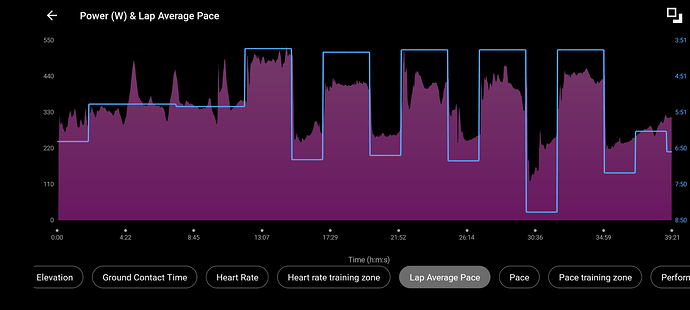Hi,
Is there a way to plot D’, similar to W’, for the running activities. My guess would be that it is probably very tricky because of the speed signal accuracy (coming mostly from GPS), but still would be nice to have!
Thanks
Florent
I was also looking for this.
If we have a chart for cycling W’prime, which is based on the differentiation of Power, would a simple modification to use the speed field of running activities make this chart possible? I was looking to see if the charts have open source code within intervals, but couldn’t find it.
I’m currently reading Skiba’s ‘Scientific Training for Endurance Athletes’, in which he writes about W’bal/D’bal
How about for running? There has only been one publication. They tried to take the bike model and directly (and inappropriately) apply it to running. Thus cross-sport application doesn’t work, because each sport recovers at its own characteristic pace. In fact, every athlete recovers differently. The best practice is to calculate a unique recovery equation for each sport ant athlete. We have not yet published our work from Breaking 2 with regard to the running application, but it will hopefully be available by the time this book hits the street. Of course, if you are a programmer with free time on your hands, it isn’t hard to do [27, 67].
I didn’t look into the references yet. It seems to be a bit more complicated than just copying the code and replacing CP/W’ by CS/D’? I wonder if adjustments are necessary (and have been made) for the running power model?
At first glance, I didn’t see any recent publications by Skiba about the mentioned Breaking 2 running stuff…
Made some thought about it: unless you are running on the track with a perfect GPS location, I don’t see how it can work well, since you will always have position jumps that will deplete D’ in an unrealistic manner. OR, you could smoothen out the pace to avoid it, but then you might loose some accuracy. The choice of the filtering would be a trade-off between accuracy and avoiding unreal D’ depletion.
@david do you see a possible way to implement it?
I’m not sure if the power version is much better for running, at least with the power measured by my Garmin forerunner 955 watch. For a workout today, average pace of the first and last interval was within 1s (4:05 vs 4:06), the ones in between a couple of seconds lower. 485W in the first interval vs 410W…430W in the subsequent ones looks wrong to me (in GAP the difference is 3s, still too small IMO.)
I would hope that it works better with D’, but I have no idea if the power data can be correct or what to expect.
Would Garmin running power would be less predictive than Stryd running power? IIUC Garmin’s running power model includes all the spring effects of one’s legs that don’t really burn matches the same way actual metabolic inputs to running as do, such as what Stryd tracks.
Or am I just really out of my depth here?
